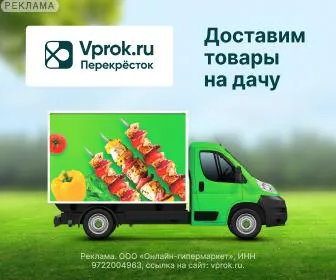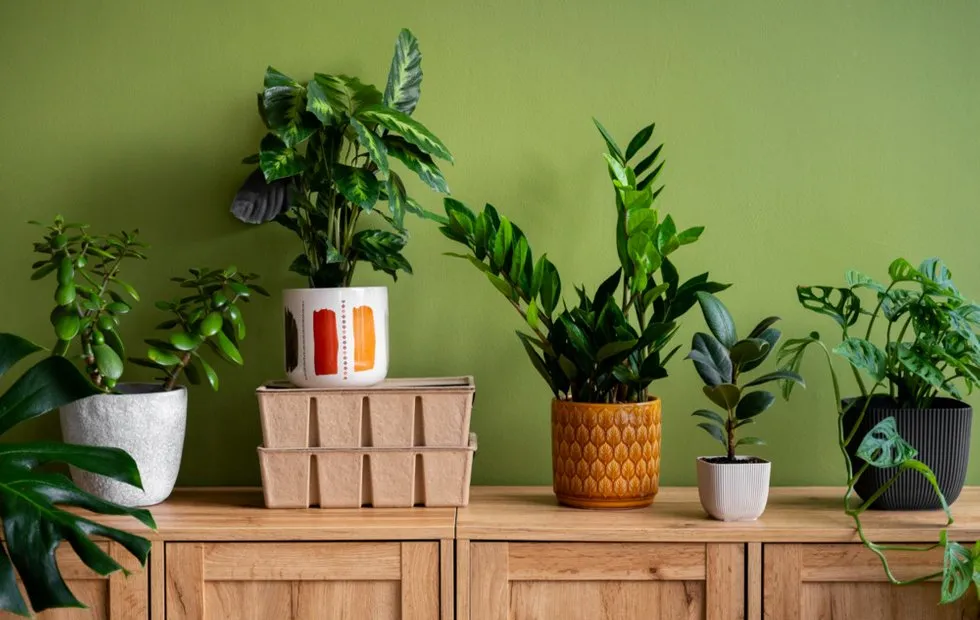There can be your advertisement
300x150
A Century Revelation: Common Products That Turned Out to Be More Beneficial Than Expensive Superfoods
Healthy products from the store near your home
This article is not a medical recommendation. Consult with a specialist before making changes to your diet.
Owners of healthy food stores don't want you to find out about these inexpensive replacements for popular superfoods. While the feed is full of photos of acai berry and spirulina smoothie bowls, bloggers compete to tell how they spent half their salary on superfoods, we asked ourselves: are these expensive supplements really necessary? It turned out that many superfoods can easily be replaced with ordinary products from the nearest store. And in most cases, accessible analogs are not just equal in benefit but even surpass expensive exotic products.
Buckwheat: Russian Answer to Quinoa
- What they push on us: quinoa — 'sacred grain of the Incas' and an ideal source of plant protein. Price — 350-500 rubles for 500 g.
- What you can buy instead: regular buckwheat for 80-120 rubles per 900 g.
Buckwheat contains almost as much protein as the advertised quinoa — 12.6 g versus 14.1 g per 100 g of product. But in terms of iron content, native grain leaves the Peruvian superfood far behind: 7.8 mg versus 4.6 mg. The same with magnesium: buckwheat has 258 mg, while quinoa only 197 mg.
The main advantage of buckwheat is the unique compound rutin, which strengthens blood vessels and improves circulation. Quinoa has none of it. Also, unlike the 'exotic' competitor, buckwheat does not contain saponins — bitter-tasting substances that can cause stomach upset.
Frozen Blueberry vs. Goji Berries
- What they push on us: goji berries — a Tibetan secret of longevity and an incredible source of antioxidants. Price — 300-600 rubles per 100 g.
- What you can buy instead: frozen blueberries for 200-300 rubles per 300 g.
If we measure antioxidant activity (on the ORAC scale), blueberries outperform goji by more than two times: 9621 units versus 4310! Moreover, goji berries almost don't contain anthocyanins — powerful antioxidants that blueberries are famous for.
Important point: frozen berries retain up to 90% of beneficial substances since they are frozen at peak ripeness. Dried goji berries lose a significant portion of vitamins during processing.
Flax Seeds: Cheap Alternative to Trendy Chia Seeds
- What they push on us: chia seeds — an ancient Aztec superfood rich in omega-3 and protein. Price — 250-400 rubles for 200 g.
- What you can buy instead: flax seeds for 50-90 rubles per 200 g.
Incredibly, but true: flax seeds contain more omega-3 fatty acids than the advertised chia — 22.8 g versus 17.8 g per 100 g. Flax also has more protein: 18 g versus 16.5 g in chia.
But the main advantage of flax is the huge amount of lignans — plant compounds that protect against hormone-dependent types of cancer. Flax seeds contain 100 (!) times more lignans than chia. And this is not a typo — exactly 100 times.
Sardines: Humble King of Seafood
- What they push on us: salmon — elite source of omega-3 and protein. Price — from 800 to 1500 rubles per kg.
- What you can buy instead: canned sardines in oil for 90-150 rubles per can (240 g).
In terms of omega-3 fatty acid content, sardines are almost on par with salmon: 2.2 g versus 2.3 g per 100 g. But in terms of calcium content, humble sardines utterly outperform the expensive competitor: 382 mg versus a mere 12 mg in salmon. This is because we eat soft bones rich in this mineral in sardines.
Moreover, sardines contain 2.5 times more vitamin B12 necessary for nervous system health. And they also have much less mercury, as small fish are at the bottom of the food chain and don't accumulate dangerous levels of heavy metals.
Liver: Forgotten Superfood of Our Grandmothers
- What they push on us: beef steaks — the ideal source of protein and iron. Price — 600-1500 rubles per kg.
- What you can buy instead: beef or chicken liver for 150-250 rubles per kg.
In nutritional value, 100 g of liver can be safely equated to a kilogram of steak — this is no exaggeration. Just look: liver has 6 times more iron, 54 times more vitamin B12, 48 times more folate, and infinitely more vitamin A — which is completely absent in steak.
Liver is a true natural multivitamin, one of the most nutritionally dense foods on the planet. No wonder hunters-gatherers always ate the liver of hunted animals first, and could give meat to companions.
White Cabbage: Pride of the Russian Garden
- What they push on us: kale — queen of greens, trendy superfood with an incredible amount of vitamins. Price — 300-500 rubles per 100 g.
- What you can buy instead: regular cabbage for 20-40 rubles per kg or red cabbage for 50-70 rubles.
Yes, kale has more some vitamins, but regular cabbage has its own trump cards: it contains vitamin U, which is not found in kale. This compound protects the stomach lining and promotes ulcer healing. No wonder cabbage juice has long been used to treat gastritis.
Red cabbage contains the same anthocyanins as blueberries and has significant antioxidant activity. And our native cabbage can be stored for months, retaining vitamin C while other vegetables have long lost their beneficial properties.

Why No One Tells the Truth About Superfoods?
The term 'superfood' was invented by marketers, not scientists. It's just a sales tool that works on a simple scheme: exotic origin + strange appearance + high price = consumer confidence in exceptional benefits.
Psychologically, we tend to believe that expensive and hard-to-access products must be better than ordinary ones. When we buy a jar of spirulina for 1500 rubles, we're not just buying a product — we're investing in the feeling of taking care of ourselves and our health.
Moreover, there's an entire industry behind exotic superfoods with multi-million budgets for advertising and promotion. And who would promote regular buckwheat or cabbage? Correctly, no one.
How Healthy Nutrition Actually Works
In reality, there are no magical products that can be added to the diet and instantly make you healthier. Modern nutrition science says that what matters is the overall eating pattern, not individual 'super products'.
Acai berries don't compensate for regular fast food consumption, and a handful of goji berries doesn't neutralize the consequences of lack of sleep and stress. Health is built on basic habits, not trendy supplements.
At the same time, many nutrients from familiar products are better absorbed than from exotic ones due to optimal component ratios. For example, iron from liver is more efficiently absorbed than from spirulina due to the presence of vitamin C and other cofactors.
Why Chasing Superfoods Is Dangerous
- Budget depletion — superfoods are several times more expensive than regular healthy foods;
- Allergic reactions — exotic products often cause intolerance;
- Fixation on specific foods instead of forming a balanced diet;
- Disappointment from exaggerated expectations about 'miracle products'.
Many people, blindly following trends in certain superfoods, ignore the basic principles of healthy nutrition without which no supplements work.
How to Eat Healthily and Cheaply
- Focus on seasonal local products — they are always fresher and more nutritious than imported ones;
- Diversify your diet with common healthy products — eat vegetables of different colors, various protein sources, and different grains;
- Use frozen vegetables and berries — they retain most beneficial substances and are available year-round;
- Cook at home — allows you to control the composition and quality of your nutrition;
- Invest in basic good-quality products instead of exotic supplements.
Remember: healthy eating should not break the bank. It must be sustainable, accessible, and enjoyable. If someone claims you can't be healthy without absurdly expensive superfoods — they probably just want to sell you another bottle of miracle powder.
More articles:
 Before and After: How They Transformed a Small Living Room in a Khrushchyovka
Before and After: How They Transformed a Small Living Room in a Khrushchyovka How a Designer Decorated a Kitchen in a Stalin-era Apartment for Herself: 5 Great Ideas
How a Designer Decorated a Kitchen in a Stalin-era Apartment for Herself: 5 Great Ideas Green Superheroes: 10 Plants That Will Survive Even the Most Careless Owners
Green Superheroes: 10 Plants That Will Survive Even the Most Careless Owners 5 Stylish Bathrooms Designed by Interior Designers for Themselves
5 Stylish Bathrooms Designed by Interior Designers for Themselves Repair Without a Designer: 6 Inspiring Ideas from Our Heroes
Repair Without a Designer: 6 Inspiring Ideas from Our Heroes How to Make Interior Visually More Expensive: 5 Simple and Effective Ideas
How to Make Interior Visually More Expensive: 5 Simple and Effective Ideas How to Create a Stunning Retro-Style Bathroom
How to Create a Stunning Retro-Style Bathroom Seasonal Cleaning: What and How to Clean in Spring for Maximum Effect
Seasonal Cleaning: What and How to Clean in Spring for Maximum Effect